If you've watched a baseball game on TV or in person lately then you may have noticed something unusual next to the catcher's ear.
If that's you and you're wondering what it is and what it's all about, then you've come to the right place.
In this article we'll walk you through everything you need to know about a catchers earpiece.

Please Note: This post may contain affiliate links. Please see our disclaimer for more information.
What is a Catchers Earpiece and How Does it Work?
A traditional catchers earpiece is an in-ear headset placed inside a catcher's helmet that's connected to a radio used by the pitching coach or manager.
In short, it's a one-way communication method from the coach to the catcher. This type of catcher earpiece is most commonly seen at the college level.
The coach has either a handheld radio, clip-on microphone or headset that serves as the transmitter.
The catcher has a headset which receives and announces the messages that the coach relays.
Depending on the type of system being used, the catcher could have a wireless or wired headset, the latter of which would connect to a battery pack secured to the back of the catcher's belt.
Please note that for this description we are not talking about PitchCom earpieces. We'll talk more about those in a moment.
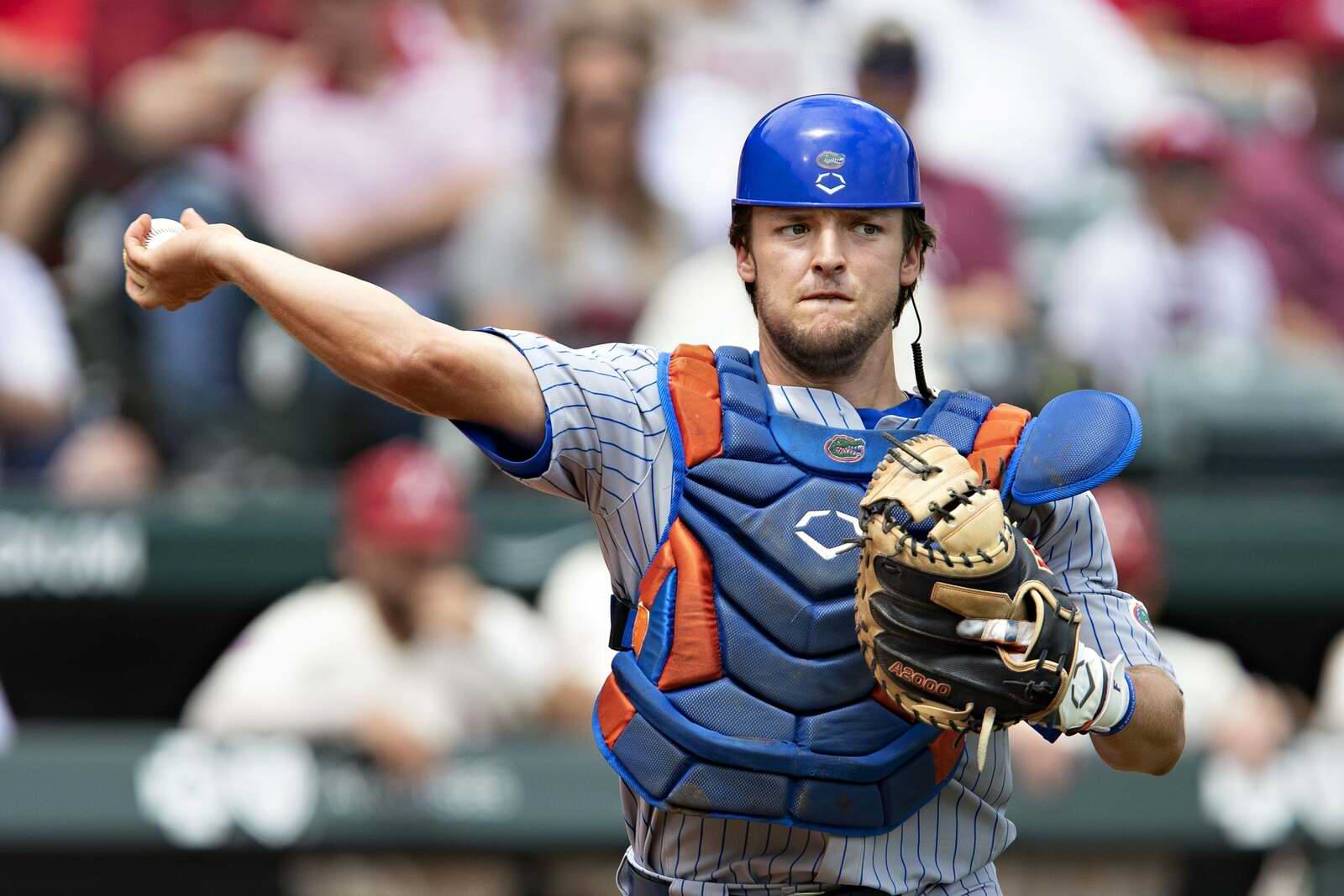
Why Do Catchers Wear Earpieces?
There are a wide variety of really good reasons why a catcher earpiece exists.
Perhaps most importantly is that a coach can quickly and accurately get pitch signs to a catcher for him or her to relay to the pitcher. This has two major benefits: speeding up the pace of the game and reducing the chance for the other team to steal signs.
Regarding the topic of preventing sign stealing, sometimes coaches will turn their back to the field to use the radio to call in the pitch, which prevents the other team from trying to read lips.
And with the invention of PitchCom, both methods provide a practically foolproof way of stopping any chance of sign stealing.
A second reason for these earpieces is that it ensures the coach is calling the pitches instead of the catcher. This can be important especially if the catcher has never before caught the person pitching.
In such a case, the coach most likely knows the pitcher's strengths and weaknesses better than the catcher, so by calling the pitches the coach is actually putting both batterymates in a better position to succeed.
A final reason why these earpieces are used is that the quick and consistent pitch calling creates a good rhythm between the pitcher and catcher.
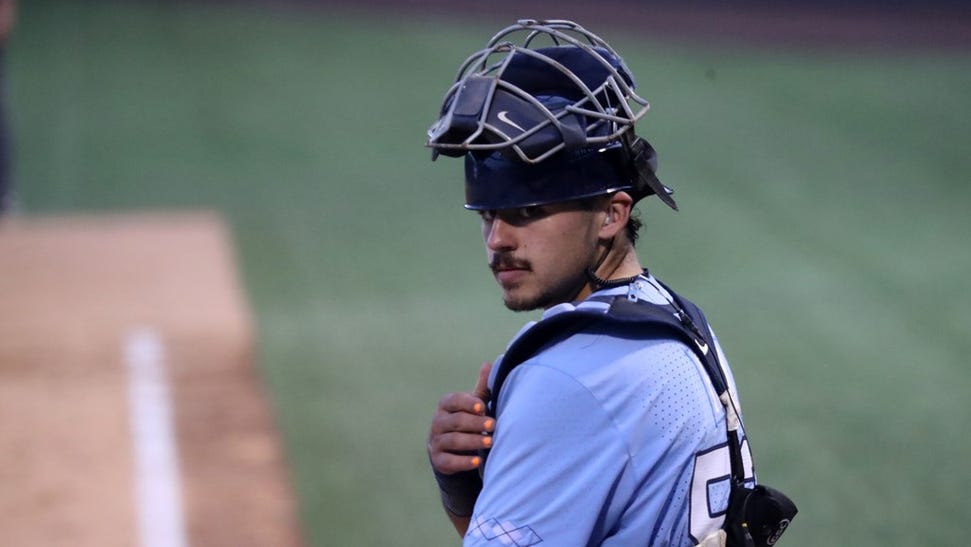
What Leagues Can Catchers Use Earpieces In?
Catchers in Major League Baseball (MLB) on down to most college catchers use earpieces in some form or fashion.
At the end of the day, however, whether you can use one depends on the rules of the league.
If you're interested in knowing whether you or your catcher can use an earpiece in-game, we encourage you to check the specific rules of the league you're playing in.
Is PitchCom the Same Thing as a Catchers Earpiece?
The PitchCom system comes with its own earpieces, but they are different from other catchers earpieces (such as those at the NCAA level).
With PitchCom, the catcher presses buttons on a wrist-based transmitter that is then sent to the pitcher’s receiver, audibly informing the pitcher of the pitch to be thrown.
MLB catchers that use PitchCom have an earpiece that comes with the system, as demonstrated in the picture below of Oakland A's catcher Shea Langeliers in 2022.
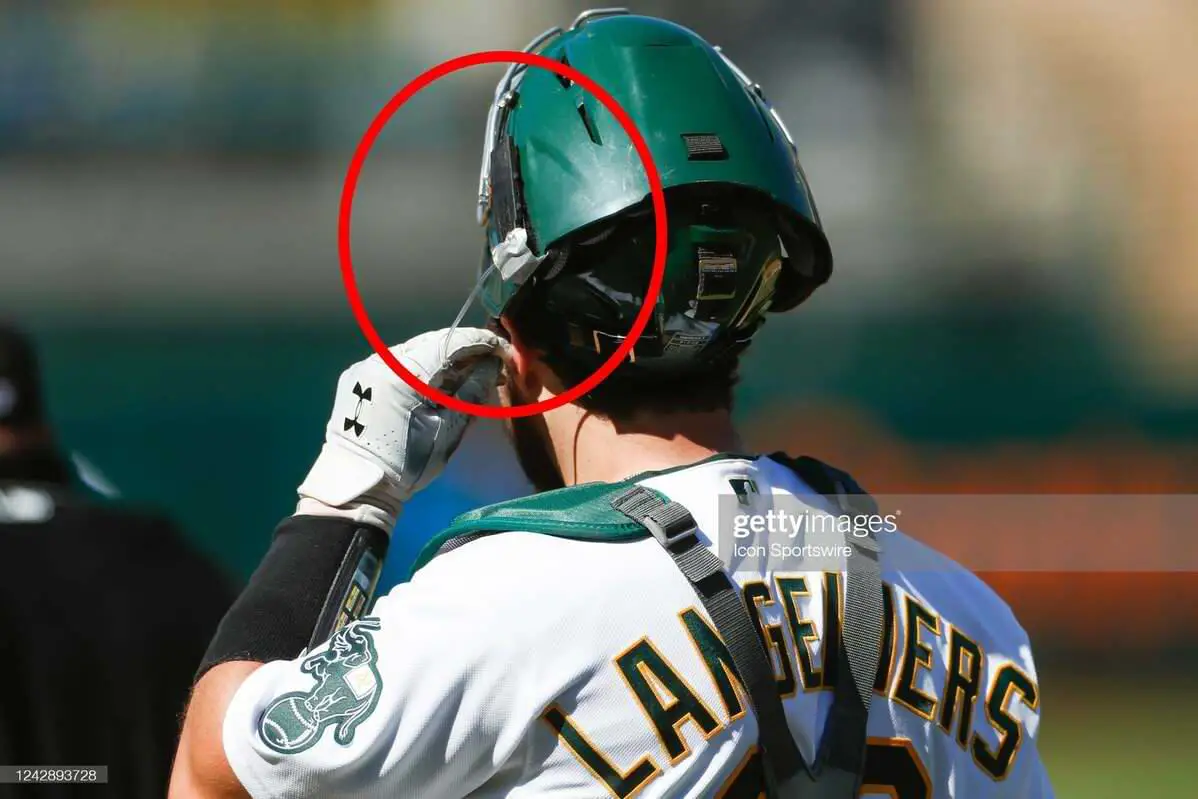
However, that earpiece is not for communication with the dugout. Instead, it is used for communicating pitches through the communication system that each player wears.
In other words, if a team is using PitchCom and a low and inside fastball is called by the catcher, then each person on the field wearing a PitchCom headset (including the catcher) will hear the same call at the same time through their earpiece.
On the other hand, many college catchers with earpieces - and other catchers not using PitchCom - have earpieces that are the one-way communication from the coach that we discuss above.
So in short, there is such a thing as a “PitchCom earpiece” that MLB catchers use and a regular (non PitchCom) earpiece that baseball catchers in other leagues use.
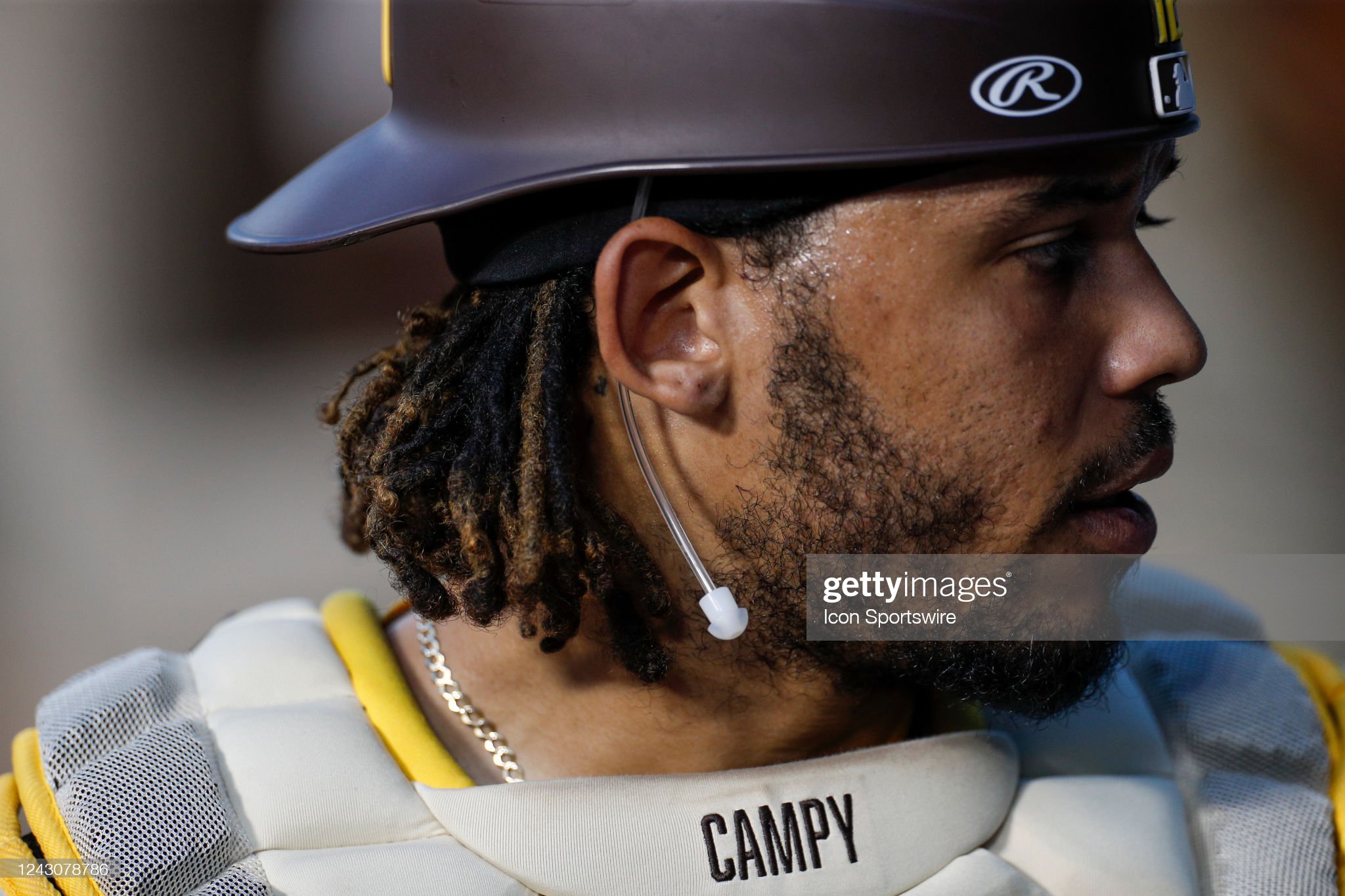
One simple way you can (usually) tell the difference is that traditional catcher's earpieces have a black wire with an in-ear speaker, while PitchCom devices tend to have a skinny gray wire with a white tip on the end.
When Did the Catchers Earpiece First Start Being Used?
Traditional radio-based catcher earpieces were approved by the NCAA to be used starting with the 2018 college baseball season.
They were first tested by the Southeastern Conference (SEC), and they were widely adapted after a successful test run by SEC teams.
At the MLB level, the PitchCom system (along with PitchCom earpieces) was approved for play beginning with the 2022 season. They were first used in the minor leagues in 2021.
Do Catchers Have the Ability to Talk Back to Their Coach Through Their Earpiece?
No, catchers do not currently have the ability to talk back to their coach using their earpiece and headset system.
It's currently a one-way communication from the coach to the catcher only.
Many catchers have expressed that they hope two-way communication becomes a new innovation added to the game soon. This would be great to see, as catchers play a huge leadership role in the game and the ability to actively engage with a coach will only increase their leadership value.
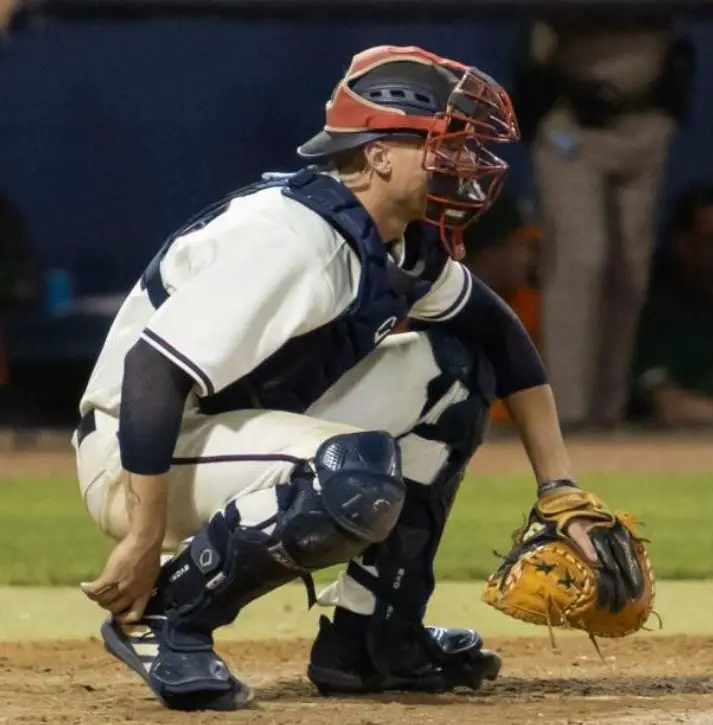
Is PitchCom Allowed at the NCAA Level?
The NCAA has allowed college baseball teams to begin using PitchCom devices during the 2023 season.
Thus far, multiple college programs are beginning to use PitchCom, though many still rely on the radio method instead of PitchCom.
Of note, the PitchCom hardware and configurations used at the NCAA level is not the same as what's allowed in the MLB. To learn more, read this excellent article by NOLA which highlights the differences.
Where Can I Buy an Earpiece for Catchers?
A number of specialty companies make high-quality catchers earpiece systems for baseball teams to use. These companies include Qubit, Porta Phone, GSC and ProCom, to name a few.
Each product can be purchased directly on their websites.
Check the details of their products to ensure they are compliant with your league rules (if applicable), since some leagues require only "league-approved" devices to be used.
If you have more leeway with the types of devices able to be used, you can always get a basic earpiece system from Amazon.
There are a variety of good radio and headset packages on Amazon that could be used for coach to catcher communication.
Whatever you purchase, make sure the earpiece is water resistant, durable, fits comfortably and has a good battery life.
Thanks for reading!
We hope this answered questions you had about MLB catcher earpieces, as well as catcher earpieces at other levels of baseball.
If we can answer any other questions, please feel free to contact us.
Thanks for stopping by Catchers Home.
Scott Perry
Scott Perry is the owner and lead author at Catchers Home. He's a former baseball player, a current coach, a husband and a Dad. He remains as passionate about baseball today as he was as a kid.

